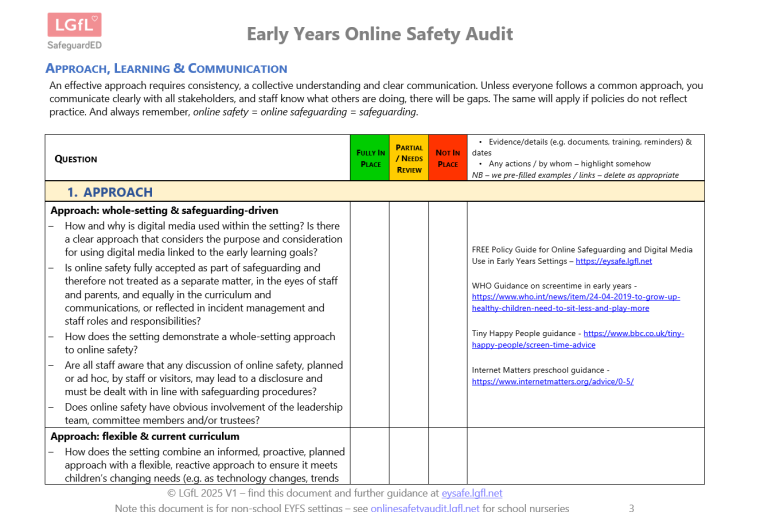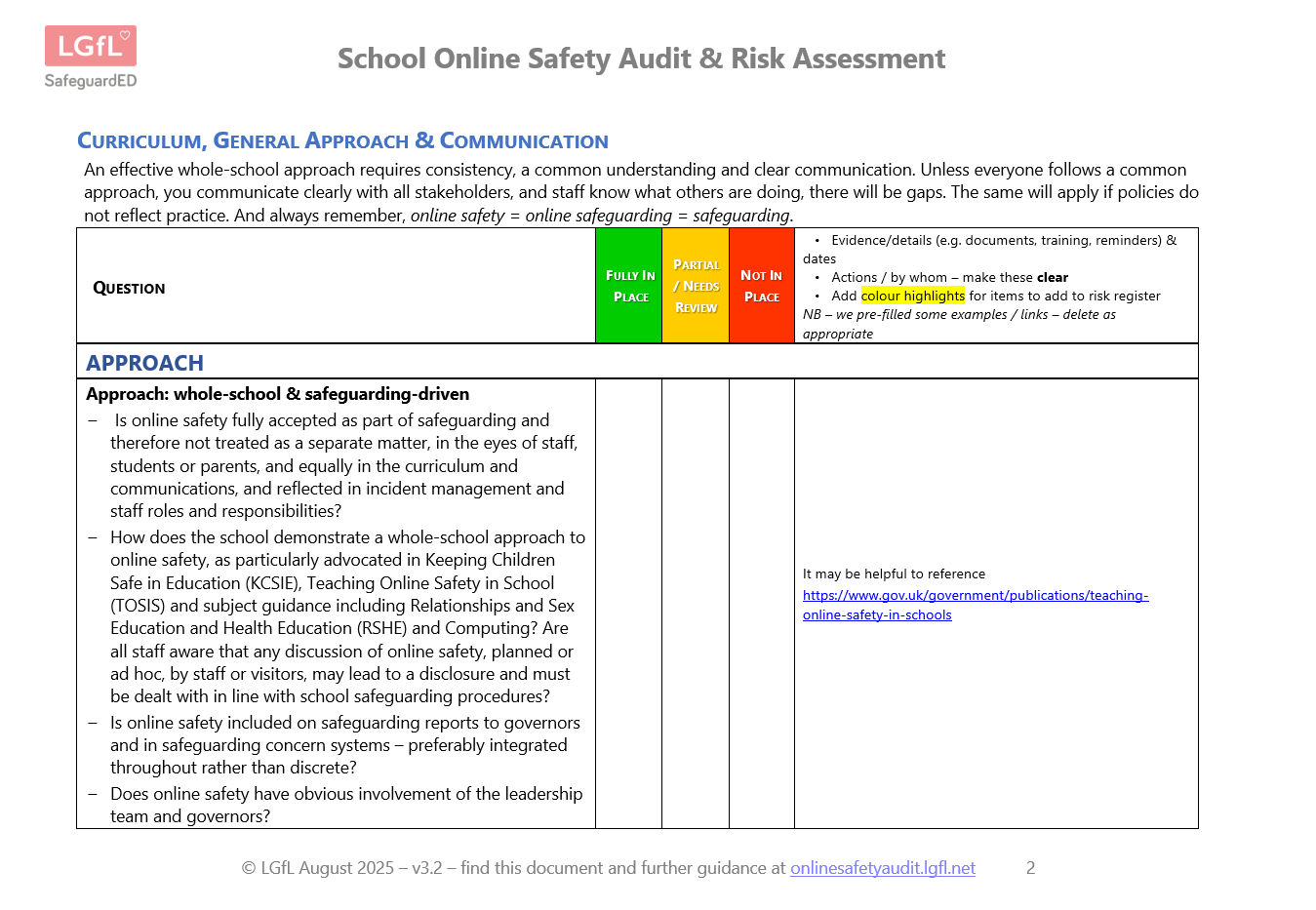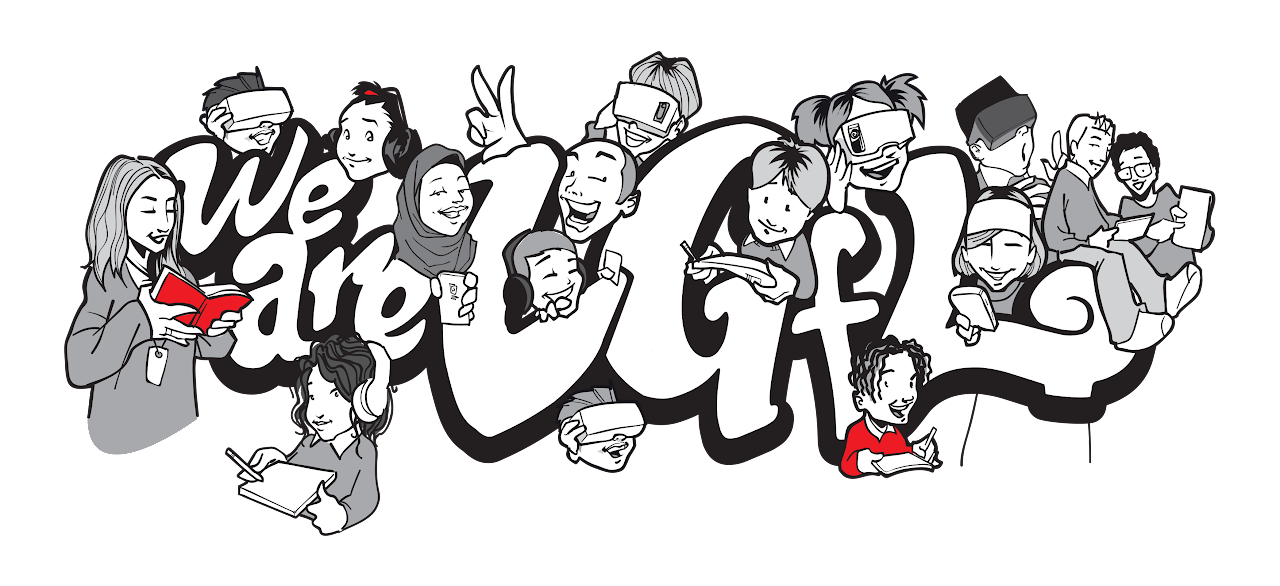Safeguarding
Online Safety Audit
Keeping Children Safe in Education states that “schools and colleges should consider carrying out an annual review of their approach to online safety”. This should be led by the designated safeguarding lead because they “take lead responsibility for safeguarding and child protection (including online safety and understanding…filtering and monitoring…” (KCSIE 2025).
That's why we created this audit tool to help schools do exactly this. It is a simple Word document you can download and edit, with lots of questions that you can give a RAG (red-amber-green) rating to and add your evidence and action points in the final column.
The audit is in two broad sections:
Curriculum, General Approach & Communication
Safe School Systems (technology for safeguarding and safeguarding for technology)
Please note that we recommend you:
Link/integrate this into your overall Section 175 / LA safeguarding audit
Use the sections on filtering & monitoring as your annual F&M review
(saves time but above all ensures an integrated, whole-school approach)
Share results with your school governors/trustees
DO NOT ask colleagues to complete the separate sections in isolation and simply paste them together at the end (mitigates against knowledge transfer and a whole-school approach)
NEW FOR 2025
This version of the online safety audit has been updated in various ways, but the key things to focus on since the previous version are the updates to KCSIE 2025 and the DfE standards in 2024 and the proliferation of generative artificial intelligence (Gen AI) tools.
We would love to hear your feedback on how you have used the tool and any suggestions for improvements - safeguarding@lgfl.net
Early Years Online Safety Audit (non-school based settings)
Download and use our Early Years Online Safety Audit designed for use in non-school based settings.




